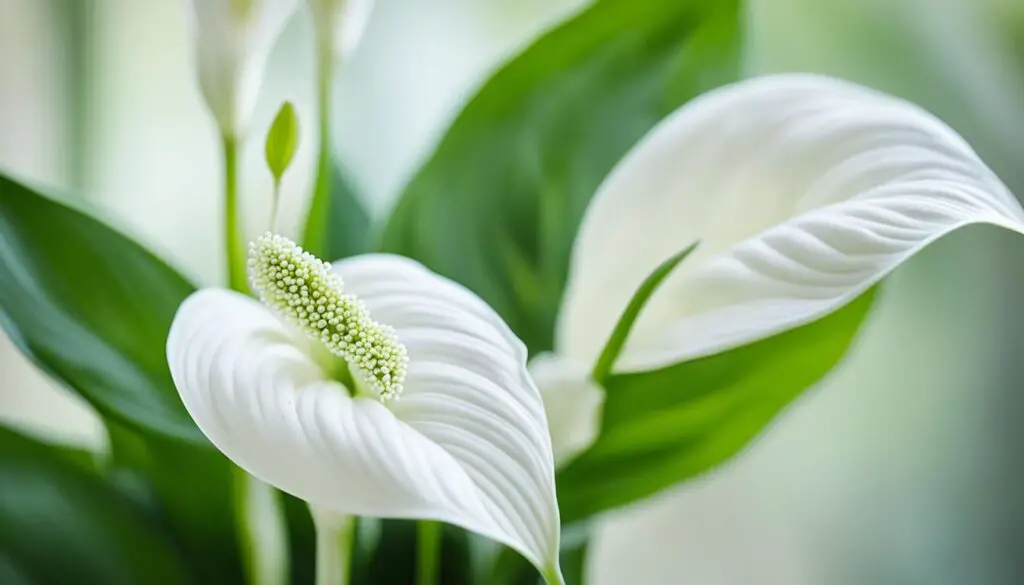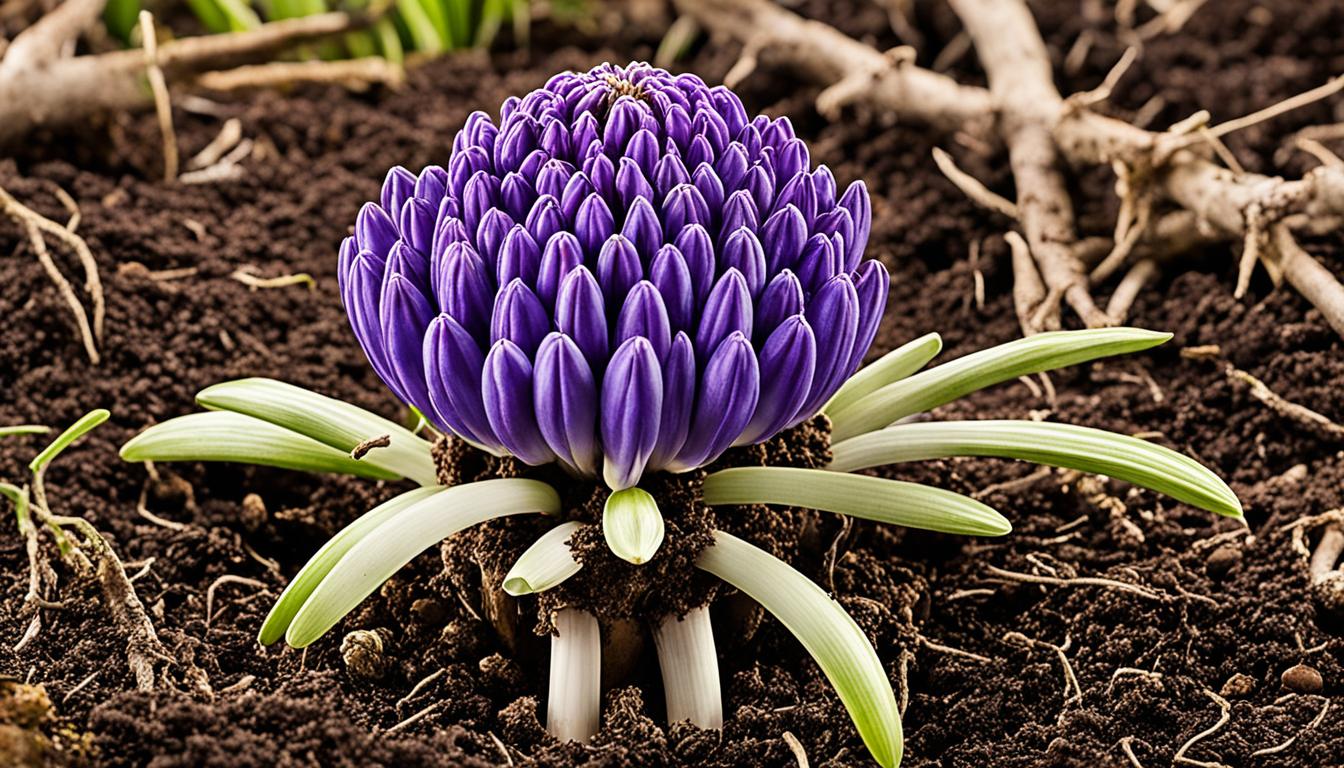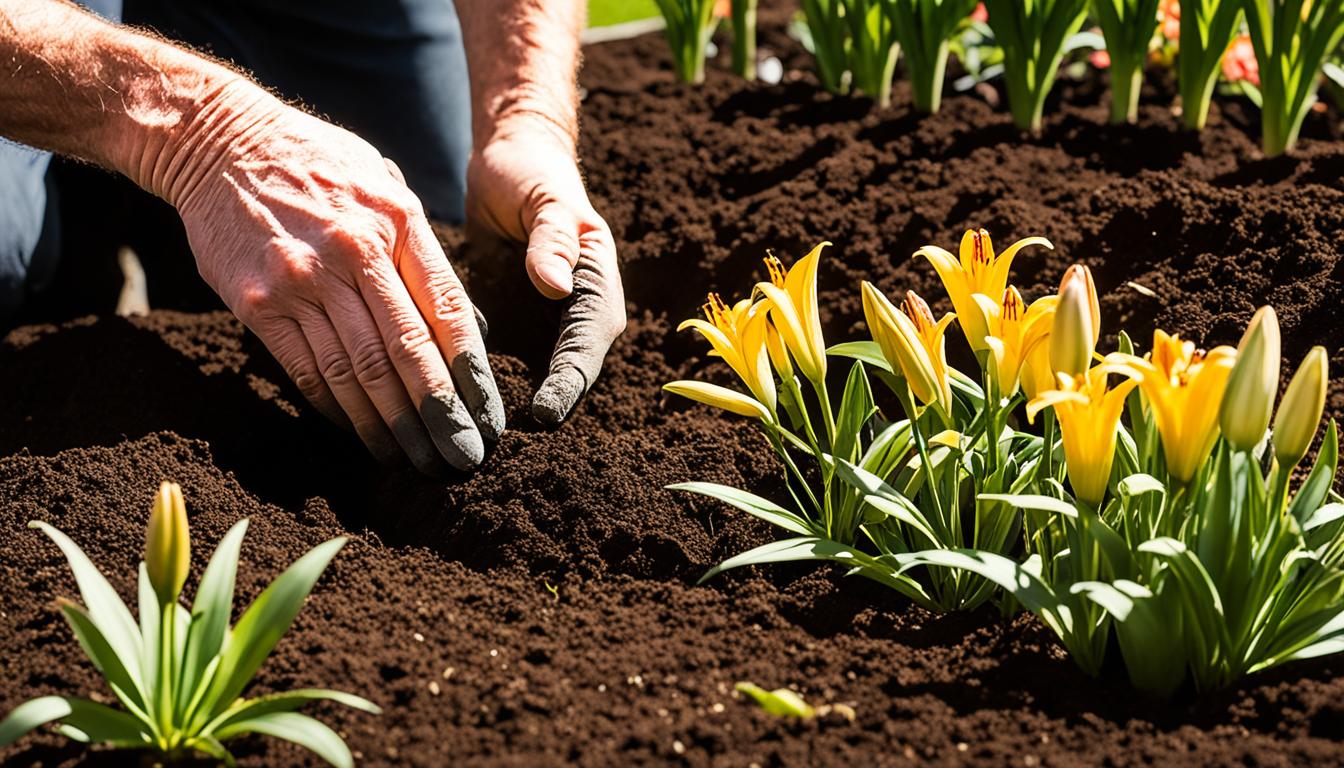Peace lilies, also known as Spathiphyllum, are popular low-maintenance houseplants that are prized for their glossy green leaves and beautiful white “flowers” (which are actually modified leaves called spathes).
While peace lilies are relatively easy to care for, getting them to produce consistent, abundant blooms can be a challenge.
In this article, I’ll share my top tips for encouraging your peace lily to flower more frequently and profusely. From optimizing lighting and temperature to proper feeding and pruning, I’ll cover everything you need to know to get more flowers from your peace lily.

Key Takeaways:
- Proper lighting is crucial for peace lily blooms
- Understand the impact of seasonal changes on flowering
- Ensure your peace lily is mature enough to bloom
- Maintain optimal temperature and humidity levels
- Fertilize your peace lily properly to encourage flowering
Importance of Proper Lighting
One of the keys to getting your peace lily to bloom consistently is providing the right lighting conditions.
Peace lilies are generally quite tolerant of low light levels, but they’ll thrive and flower best when placed in bright, indirect sunlight.
Finding the perfect spot in your home that receives medium to bright, indirect light is crucial – you’ll want to avoid exposing your peace lily to direct sunlight, as that can scorch the leaves.
Optimal Light Conditions for Flowering
The ideal lighting for a peace lily is one where the leaves remain a rich, uniform green rather than becoming variegated or pale.
If the flowers stay green instead of turning white, that’s a sign the plant is getting too much light exposure. Maintaining that delicate balance is essential for consistent, beautiful blooms.
Signs of Improper Light Exposure
- Leaves becoming variegated or pale – a sign of too little light
- Flowers staying green instead of turning white – a sign of too much light
By understanding your peace lily’s light requirements, light tolerance, and sunlight needs, you can create the optimal light conditions for flowering and enjoy those striking white blooms throughout the year.
The Influence of Seasonal Changes
As peace lilies are tropical plants, they are naturally sensitive to the changing seasons and the length of daylight.
This phenomenon, known as photoperiodism, plays a crucial role in triggering the plant’s bloom cycle.
Understanding Photoperiodism
Peace lilies are programmed to flower in the spring and fall when the days are shorter, typically around 12 hours of daylight.
During the longer summer days, the plants often enter a resting phase and may not bloom as readily. To encourage more frequent flowering, it’s essential to mimic these seasonal cues that influence the peace lily’s flowering cycle.
By providing shorter day lengths in the fall and winter, you can stimulate the formation of flower buds.
Then, as the days lengthen in the spring, the peace lily will receive the necessary signal to support full bloom. Understanding and responding to the plant’s photoperiodism requirements is key to unlocking its seasonal flowering potential.
“Paying attention to the seasonal changes and adjusting the lighting conditions accordingly can make a significant difference in the number of flowers your peace lily produces.”
Plant Maturity and Flowering Readiness
Achieving consistent blooms from your peace lily requires more than just providing the right growing conditions. Another crucial factor is ensuring your plant has reached the proper level of maturity.
Peace lilies generally won’t flower until they are 1 to 3 years old, even if they were blooming when you first brought them home.
This is because commercial growers often use growth hormones and carefully controlled environments to induce early flowering in young plants.
Once you get your peace lily settled into your home, it needs time to establish itself and reach the right stage of growth before it will naturally begin producing those beautiful white flowers.
Age Requirements for Blooming
With the right care and ideal environment, a healthy, mature peace lily should reward you with consistent blooms year after year. Keep in mind that the peace lily flowering maturity is typically reached when the plant is 1 to 3 years old. Before this age to flower, the peace lily may not have the necessary resources to dedicate to flowering triggers and growth stages.
So, if your peace lily hasn’t bloomed in a while, don’t get discouraged. As long as you’re meeting its basic needs, such as providing the right when do peace lilies bloom lighting conditions, the plant will eventually reach the peace lily flowering maturity required to start producing those beautiful flowers on a regular basis.
Get More Flowers From Your Peace Lily
If you’re a peace lily enthusiast, you’re likely eager to maximize the number of gorgeous blooms your plant produces. Fortunately, there are several proven strategies you can employ to encourage your peace lily to flower more prolifically.
- Provide bright, indirect light. Peace lilies thrive in medium to bright, filtered light. Avoid direct sunlight, which can scorch the leaves and inhibit flowering.
- Mimic seasonal changes. Adjust the day length in your home to match the plant’s natural flowering cycle, with shorter days in fall/winter and longer days in spring.
- Allow the plant to mature. Be patient, as peace lilies generally won’t bloom until they are 1-3 years old.
- Regulate temperature and humidity. Aim for daytime temps in the mid-70s°F and maintain moist but not soggy soil.
- Feed with a balanced fertilizer. Use a bloom-boosting fertilizer during the growing season to support flower production.
- Prune spent blooms. Deadhead faded flowers to encourage the plant to rebloom.
By following these tips for getting more peace lily flowers, you can maximize the flowering potential of your plant and enjoy its beautiful blooms year after year.
| Tip | Description |
|---|---|
| Provide bright, indirect light | Peace lilies need medium to bright, filtered light to thrive and bloom. Avoid direct sunlight. |
| Mimic seasonal changes | Adjust the day length in your home to match the plant’s natural flowering cycle, with shorter days in fall/winter and longer days in spring. |
| Allow the plant to mature | Be patient, as peace lilies generally won’t bloom until they are 1-3 years old. |
| Regulate temperature and humidity | Aim for daytime temps in the mid-70s°F and maintain moist but not soggy soil. |
| Feed with a balanced fertilizer | Use a bloom-boosting fertilizer during the growing season to support flower production. |
| Prune spent blooms | Deadhead faded flowers to encourage the plant to rebloom. |

“With the right care and environmental conditions, you can maximize the flowering potential of your peace lily and enjoy its beautiful blooms year after year.”
Regulating Temperature and Humidity
Achieving the perfect peace lily requires more than just the right lighting – regulating the temperature and humidity levels around your plant is equally crucial for consistent flowering.
These tropical beauties thrive in specific climate conditions, and understanding their preferences can make all the difference in your quest for a lush, blooming peace lily.
Ideal Temperature Range
Peace lilies prefer daytime temperatures in the mid-70s Fahrenheit (around 24°C). If the temperature consistently dips below 18°C, your peace lily will struggle to produce those stunning white flowers.
Maintaining this ideal temperature range is especially important during the plant’s active growing season in spring and summer.
Maintaining Proper Humidity Levels
In addition to temperature, peace lilies also thrive in humid environments. To keep your plant happy, try misting the leaves regularly or placing the pot on a tray of pebbles and water.
Avoiding dry, drafty conditions is key to promoting healthy flowering and preventing the leaves from wilting.
| Environmental Factor | Ideal Conditions for Peace Lilies |
|---|---|
| Temperature | Mid-70s Fahrenheit (around 24°C) |
| Humidity | High humidity, achieved through misting or pebble trays |
By closely monitoring the peace lily’s temperature and humidity needs, you’ll be well on your way to creating the ideal growing conditions for abundant blooms. Remember, these tropical plants thrive in environments that mimic their natural habitat, so paying attention to these environmental factors is key to their flowering success.
Fertilization and Flower Production
Providing the right fertilizer can make a significant difference in the flowering performance of your peace lily. While these plants are not heavy feeders, a balanced, low-salt fertilizer formulated for flowering houseplants can work wonders.
The key is to avoid high-nitrogen formulas designed for foliage growth, as these won’t deliver the specific nutrients peace lilies need for abundant blooms.
Balanced Fertilizer for Blooming
Look for peace lily fertilizer or bloom booster products that contain a balance of essential nutrients. Brands like Dyna-Gro Bloom or GT Flower Focus are specially designed to support flowering in peace lilies and similar houseplants. These fertilizers provide the peace lily nutrient requirements to help your plant thrive and produce stunning flowers.
Feeding Schedule for Peace Lilies
- Apply the peace lily flower food every 6-8 weeks during the growing season.
- Use a peace lily feeding schedule of diluted, frequent feedings for best results. This “Weakly Weekly” approach helps keep your plant consistently nourished.
- Avoid over-fertilizing, as too much can be just as detrimental as not enough.
| Fertilizer Type | Recommended for Peace Lilies | Frequency |
|---|---|---|
| Balanced, Low-Salt Fertilizer | Yes | Every 6-8 weeks during growing season |
| High-Nitrogen Fertilizer | No | N/A |
By following these tips on peace lily fertilizer and feeding, you can help ensure your plant receives the necessary nutrients to produce an abundance of gorgeous blooms throughout the year.

Pruning and Reblooming Cycle
Maintaining the lush, flowering beauty of your peace lily requires a bit of strategic pruning. By deadheading spent blooms and carefully trimming the plant, you can encourage your peace lily to rebloom multiple times throughout the year. This peace lily pruning and reblooming cycle is key to maximizing the flower longevity and vibrant display of these popular houseplants.
Once the distinctive white spathe of a peace lily bloom starts to turn green and then brown, it’s time to deadhead the flower.
Using a clean, sharp pair of scissors, snip the spent bloom off just above the nearest healthy leaf. This simple act of peace lily pruning sends a signal to the plant to redirect its energy into producing a brand-new flower.
- Identify spent blooms with a fading, green-to-brown spathe.
- Carefully trim the flower spike just above the nearest leaf using clean shears.
- Dispose of the spent bloom and watch for a new flower to emerge in the coming weeks.
With the right lighting, temperature, and humidity conditions, a healthy peace lily can rebloom several times per year, with each flower lasting around 4 weeks. By staying on top of regular deadheading and pruning, you’ll maintain the peace lily’s bloom cycle and enjoy a continuous display of its elegant, long-lasting flowers.
“Proper pruning and deadheading are essential for keeping peace lilies in peak flowering condition.” – Gardening Guru, Jane Doe
Troubleshooting Flowering Issues
If your peace lily isn’t flowering despite your best efforts, there are a few common issues you can look into. First, ensure the plant is getting enough light – moving it to a brighter, more indirect spot may help stimulate flowering.
It’s also crucial to monitor your watering habits, as both overwatering and underwatering can inhibit flower production.
Peace lilies require a period of cooler temperatures in fall and winter to trigger bud formation, so make sure it’s not getting exposed to drafts or sudden temperature changes.
If the plant seems healthy but still won’t bloom, it may simply need more time to mature. With patience and the right care, your peace lily should reward you with beautiful, long-lasting peace lily flowers.
If you’re facing peace lily flowering problems or peace lily bloom challenges, consider the peace lily flowering triggers and peace lily flowering troubleshooting tips I’ve outlined. With a little diligence, you can get your peace lily blooming in no time.
FAQ
What are the optimal light conditions for my peace lily to flower?
Peace lilies thrive in medium to bright, indirect sunlight. They need enough light to maintain their green leaves, but too much direct sunlight can scorch the foliage. Aim for a spot that receives bright, filtered light for the best flowering results.
How do I mimic the seasonal changes that trigger peace lily blooming?
Peace lilies naturally flower in response to changes in day length. Provide shorter day lengths (around 12 hours) in the fall and winter to stimulate flower bud formation, then switch to longer days in spring to support full bloom.
When will my peace lily start flowering?
Peace lilies generally won’t bloom until they are 1 to 3 years old, even if they were flowering when you first purchased them. Commercial growers often use growth hormones to induce early flowering in young plants, but at home your peace lily needs time to mature before it will naturally begin producing flowers.
What temperature and humidity levels does my peace lily need?
Peace lilies prefer daytime temperatures in the mid-70s Fahrenheit (around 24°C) and do best in humid environments. Misting the leaves or placing the pot on a pebble tray can help increase moisture levels. Avoid dry, drafty conditions that can inhibit flowering.
How should I fertilize my peace lily to promote more blooms?
Use a balanced, bloom-boosting fertilizer formulated for flowering houseplants, applying it every 6-8 weeks during the growing season. Avoid high-nitrogen fertilizers that will encourage foliage growth over flowers.
How do I deadhead my peace lily to encourage reblooming?
Once the white flower spathe starts to turn green and brown, use clean scissors to snip it off just above the nearest leaf. This will signal the plant to redirect its energy into producing a new bloom.
What should I do if my peace lily isn’t flowering?
Check the lighting, water, and temperature conditions to ensure you’re meeting the plant’s needs. Peace lilies also require a period of cooler temps in fall/winter to trigger bud formation. If the plant seems healthy but still won’t bloom, it may just need more time to mature.



